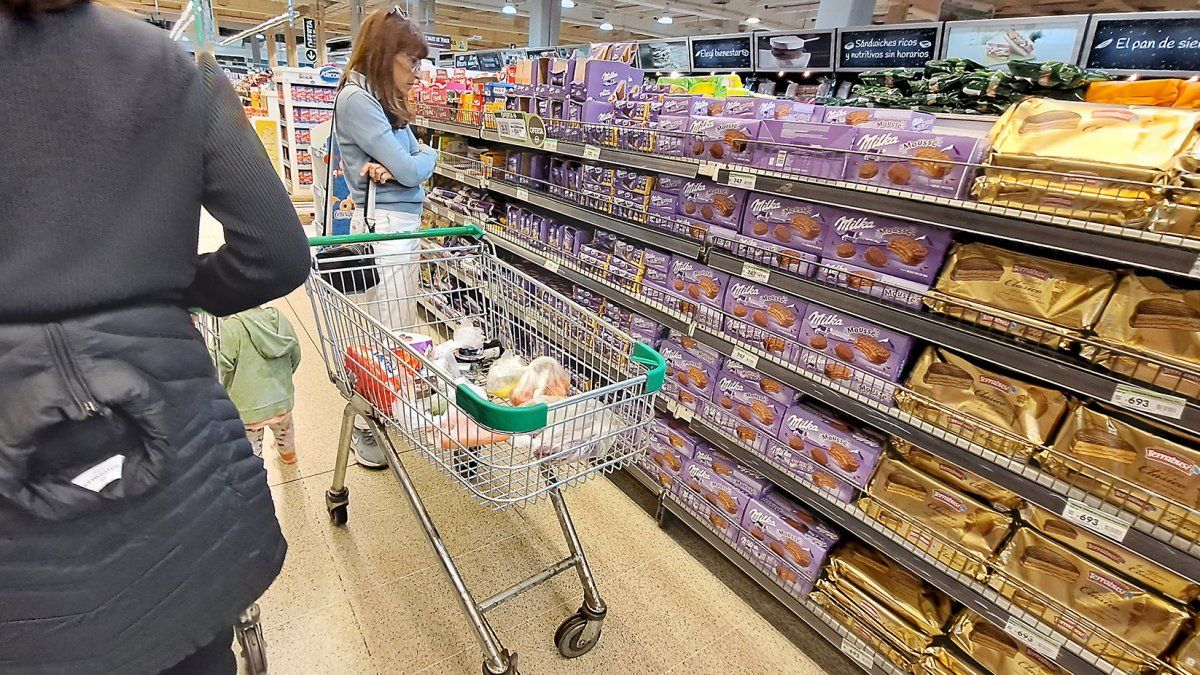According to the survey, andThe warehouse item presented an increase of 6.3% last month and within this segment, the increases in oil (6.6%), rice (8.3%), noodles (11.5%) and bread (8.7%) stood out. While, fruits and vegetables climbed 3%, led by apples (22.8%); onion climbed 7.3% and black potato 1.7%. The meatsfor his part, rose 2.6%: the roast increased 2.7% and the shoulder, 5.2%.
Different consultants that measure the evolution of prices had already warned that during November there was a slowdown in the rise in the food item. By case, from C&T, they highlighted that “food and beverages moderated strongly, to 3.8% per month, above all, thanks to meat, vegetables and beverages”. “This moderation did not occur in the items not reached by the price agreements, such as ready-to-go meals or restaurants.”
For Focus Market, meanwhile, food rose 5.2%. “In November we observed a slowdown in the price rise in basic food basket categories. In October there had been strong preventive increases against a freeze on future prices, which ended with the launch of the Fair Prices program”, pointed out Damián Di Pace, director of the firm, who detailed: “In the market there is a dual behavior. In large stores there is compliance with the program, while in the rest of the self-service channel there are increases of up to double digits in various products”.
Those “preventive increases” are one of the factors that may explain the slowdown in prices during November. Another aspect that may have an impact, as Di Pace pointed out, is the drop in consumption that has been recorded in the different surfaces of supermarkets and self-service stores in recent months. A third point that the specialist highlighted in this regard is the implementation of the Fair Prices program.
“Perhaps the striking data from the November price measurement is that some categories decreased in price, such as diapers, powdered juices, bleach, kitchen rolls, among others.. The 11% drop in consumption in October in supermarkets of up to 500 m2 and 4.3% in large stores put a ceiling on prices,” said Di Pace, who added: “Looking ahead to December, the Government will try to improve social humor by increasing the Minimum Vital and Mobile Salary by 20%, the Alimentar card by 40%, a $10,000 bonus in three tranches for retirees and negotiates a bonus for private employees who have lost to inflation”.
Inflation Outlook
The truth is that a lower increase in the food item would have helped to lower general inflation last month. In fact, some consultants estimate that it was around 6% and some even projected that it could have perforated that floor.
“Lhe slowdown in November is mainly explained by the lower increase in food. Although the ‘Fair Prices’ program began, this behavior began to be observed a few weeks prior to its implementation.. The effect of the price agreement will be more visible from December, although it is clear that its result will be temporary, due to the fact that the inconsistencies of fiscal and monetary policy are not compatible with a sustained drop in inflation,” Lautaro said in this regard. Moschet, economist at the Libertad y Progreso Foundation.
For their part, from the LCG consultancy they pointed out: “Our weekly survey of food prices registers a significant deceleration, placing it around 0.9% per week (consistent with 3.5% per month). In any case, We hope that, if it continues, this will be reflected by December, once the effect of the October statistical carryover dissipates.”.
“In this sense, although the economy seemed to be stagnating at an inflation floor of 6% per month, the current Fair Prices program (now also extended to fuels) together with months of greater seasonality in the demand for money, could generate some reduction. in the rate of price increase”, they added from the firm, and concluded: “In any case, the challenge will take place once the program ends and companies must readjust prices to recover lost profitability, which could threaten to reinvigorate inflationary inertia, the main component that seeks to attack the government. However, due to a high nominal value in the rest of the items, a higher rate of devaluation and reopening of parities, we expect inflation to reach 110% per year by 2023”.
Source: Ambito
David William is a talented author who has made a name for himself in the world of writing. He is a professional author who writes on a wide range of topics, from general interest to opinion news. David is currently working as a writer at 24 hours worlds where he brings his unique perspective and in-depth research to his articles, making them both informative and engaging.




